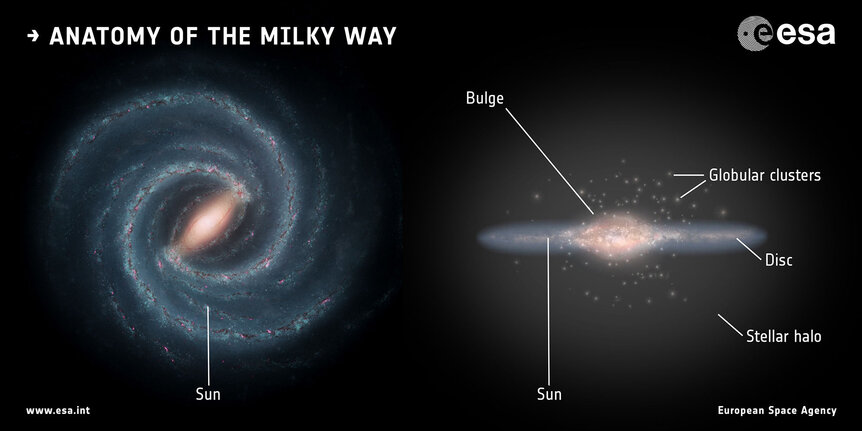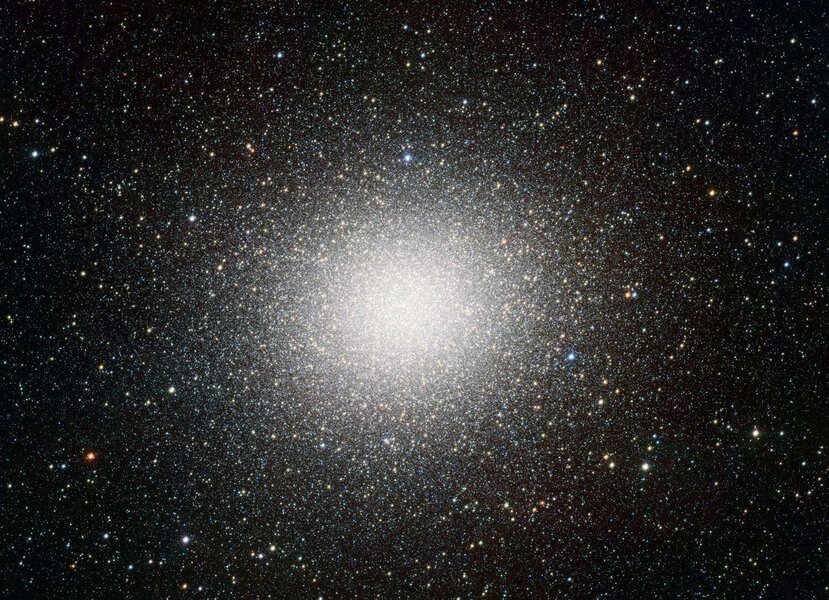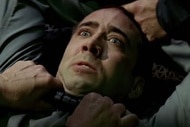Create a free profile to get unlimited access to exclusive videos, sweepstakes, and more!
Are huge black holes from dead galaxies roaming around the Milky Way?
Astronomers are looking for black holes left over from ancient collisions

Whenever I talk about black holes, I get questions from people worried that one will wander too close to Earth and destroy us all.
The odds of that are what scientists like to call vanishingly small: So close to 0 the difference hardly matters. The percentage of stars that can turn into black holes is very low, and the galaxy is very, very big.
That's not to say they aren't out there. There are probably tens of millions of them in the Milky Way, which sounds terrifying until you realize there are literally tens of trillions of cubic light years out there in the galaxy for them to stay perfectly isolated in.
But those would be what we call stellar mass black holes, ones from maybe 3 up to a hundred times the mass of the Sun. There are far larger ones out there, called intermediate mass black holes, from a few hundred up to a few hundred thousand times the Sun's mass. How many of those might be out there?
A team of astronomers decided to find out. We don't really know how intermediate mass black holes (or IMBHs) form, but we think they are common in dwarf galaxies, galaxies like the Milky Way but much smaller. A big galaxy like ours can have dozens of such small galaxies as satellites orbiting it at any one time, and may have encountered thousands of them over its lifetime.
A dwarf galaxy passing too close or even through our galaxy is in for a world of hurt; the far larger gravity of the Milky Way would strip most of the stars away from it, leaving behind just the core. Many dwarf galaxies have a central (or off-center) IMBH, with lots of stars held tightly by it. If the IMBH can hold on to them even after our galaxy cannibalizes most of its stars, it's possible it could still be in orbit, moving through space in the Milky Way with its densely populated cadre of hundreds or possibly thousands of stars orbiting it.
The astronomers first used physical models of black holes, dwarf galaxies, and stars to determine what such an object would look like now — they call them hypercompact stellar clusters, because they'd only be literally a few light years across — including the colors of the stars, how tightly packed they'd be, and so on.
They then turned to Gaia, a European Space Agency observatory that has mapped the positions, motions, and distances of well over a billion stars in our galaxy. Using their models of clusters, they searched for places in the sky where there was an unusual number of stars in one spot, with all the stars at the same distance and moving together through space.
Gaia is amazing but can't see faint enough stars to know if these clots are hypercompact clusters or not. So the astronomers then used their candidate list to see what these objects looked like in the DECam Legacy Survey, a wide-field survey of the sky taken by the Dark Energy Camera, which can go much fainter.
The result? Of the 86 candidates they found both in Gaia and DECam observations (covering 8,000 sqaure degrees, a fifth of the entire sky!), the number of them that turned out to be hypercompact stellar clusters orbiting an intermediate mass black hole was... zero. Oof.
None of them matched the criteria needed. Some had stars that were clearly of many different ages (the cluster stars should all be about the same age) or the colors of the stars didn't match.
I'll admit to being disappointed when I read that part of the paper — IMBHs are extremely difficult to pin down, and this is a clever idea to find them — but all is not lost. There could still be clusters out there, but their survey just missed them. For example, their criteria are highly model-dependent, and maybe the models aren't quite right (based on those models they predicted they should find roughly 100 such clusters, so something is off here). Perhaps over time the stars all left the cluster, leaving behind just the IMBH surrounded by stellar mass black holes (more massive objects tend to fall to a cluster's center while lower mass objects can fly off), which would make them invisible. Or maybe dwarf galaxies don't generally have massive enough black holes to hold on to stars, so the clusters themselves aren't out there.
They note that 'scopes about to come online, like the huge ground-based Vera Rubin Obeservatory, and the space-based Euclid and Nancy Grace Roman Telescope, could still find these clusters, even perhaps seeing them around nearby galaxies.
It would also help to ID all clusters in the Milky Way that could be stripped nuclei of former wee galaxies. We know those exist; the "globular cluster" M54 is either the nucleus of the Sagittarius Dwarf Galaxy which our galaxy is currently eating or once belonged to it, and the magnificent Omega Centauri (so big and bright it's visible to the naked eye!) is also likely the undigested remains of a previously masticated galaxy. We also see dozens of stellar streams, long linear ribbons of stars that were torn off smaller galaxies and clusters (Gaia in fact was instrumental in finding these), so we know the Milky Way has been a busy galactic gourmand for eons.
It's reasonable to think that there could be hundreds, maybe thousands of these black holes calmly and quietly orbiting around the center of the Milky Way. We just need to figure out how to see them. And if it turns out there is none? Well, that would be pretty interesting too. Either way, we learn something important about the distant past of the galaxy we live in.

















